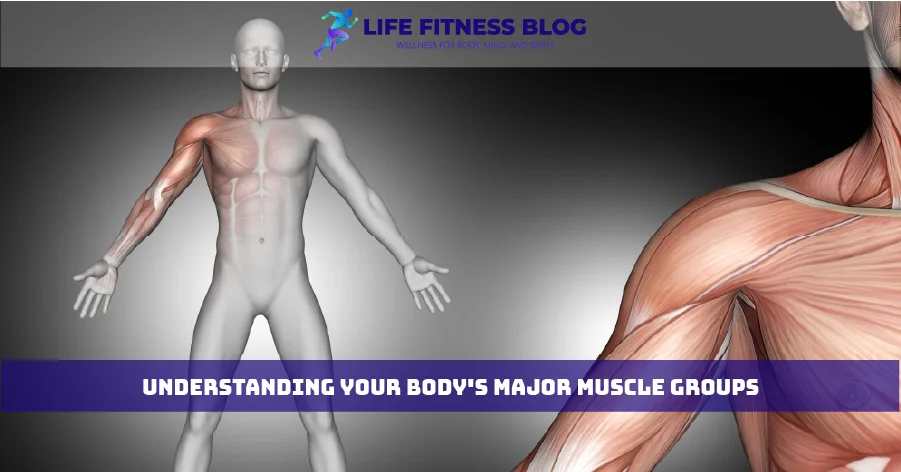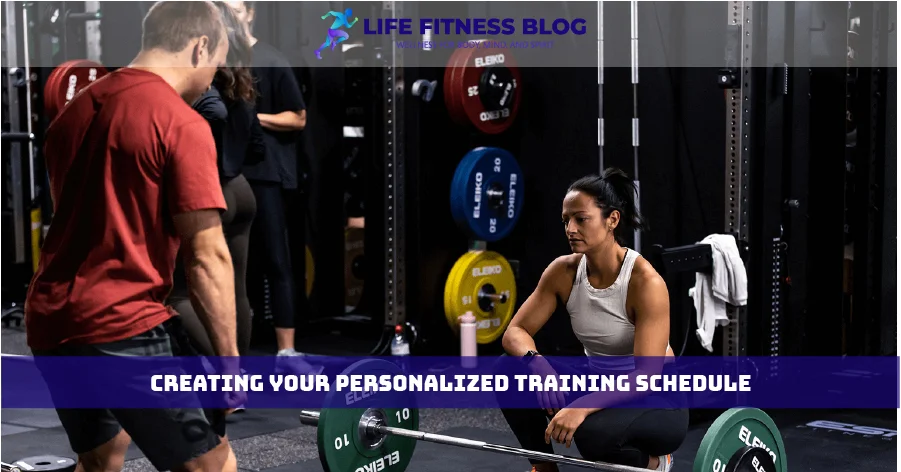Many people want a strong and well-proportioned body. The key is to focus on the five biggest muscles. These muscles are crucial for building strength, muscle, and improving how well you move.
This guide will show you how to make these muscles stronger. You’ll learn about their anatomy and how to train them effectively. It’s packed with tips to help you grow your muscles and reach your fitness goals.
Whether you’re new to working out or have been doing it for a while, this guide is for you. It offers valuable advice to help you build muscle and reach your fitness dreams.
Table of Contents
Understanding Your Body’s Major Muscle Groups
Starting a muscle-building or strength-training journey is exciting. But first, you need to know about the body’s main muscle groups. Knowing this helps you plan workouts that grow muscles and boost strength.
Anatomy of Primary Muscles
The human body has several major muscle groups. Each has its own shape and job. For example, the quadriceps are on the front of the thighs. The latissimus dorsi, or “lats,” cover the back. The pectoralis major, or chest muscles, are in the chest. The gluteus maximus makes up the buttocks, and the hamstrings are at the back of the thighs.
Role in Overall Strength
These muscle groups are key for moving and doing things. They help us stand, walk, lift, and do complex exercises. Strengthening them boosts our muscle strength, power, and performance.
Muscle Fiber Types and Growth
- Muscle fibers are mainly of two types: slow-twitch (type I) and fast-twitch (type II).
- Slow-twitch fibers help with endurance and aerobic activities. Fast-twitch fibers are for explosive, high-intensity movements.
- Good muscle-building and strength-training programs work on both fiber types. This leads to balanced muscle growth and development.
“Understanding the anatomy and function of your body’s major muscle groups is the foundation for effective muscle building and strength training.”
Knowing about the primary muscles and their roles helps you plan better workouts. This way, you can build muscle, increase strength, and improve your overall physical performance.

The Science Behind Muscle Growth and Development
Unlocking muscle-building secrets is more than just lifting weights. It involves complex physiological processes that drive growth and strength. Knowing the science behind it helps create effective strength training programs.
At the heart of muscle growth is muscle protein synthesis. Strength training causes micro-tears in muscles, triggering repair. This repair builds new muscle fibers, increasing size and strength over time.
The rate of muscle protein synthesis is affected by hormonal responses to exercise. Hormones like testosterone, growth hormone, and IGF-1 are key in stimulating muscle growth. Proper exercise and nutrition can optimize these hormonal responses, enhancing muscle building.
The principle of progressive overload is also crucial. It says you must increase demands on muscles over time to build muscle. This can be done by adding weight, reps, or volume to your exercises, pushing your muscles to grow stronger.
| Muscle Building Factors | Description |
|---|---|
| Muscle Protein Synthesis | The process of building new muscle fibers in response to exercise-induced muscle damage. |
| Hormonal Responses | Gradually increase the demands placed on your muscles to drive continuous muscle growth. |
| Progressive Overload | Gradually increasing the demands placed on your muscles to drive continuous muscle growth. |
Understanding these scientific principles helps create a solid muscle-building strategy. By integrating these concepts into your strength training, you unlock your muscle development potential.
Identifying the Five Largest Muscles in Your Body
Building a strong body starts with knowing the key muscles. The five largest muscles are crucial for strength, stability, and sports performance. Let’s dive into each muscle group.
Quadriceps
The quadriceps are at the front of your thighs. There are four muscles that help extend your knees and keep your hips stable. Strengthening them improves your squat, lunge, and leg press skills. These are key for muscle building and how to strengthen the 5 largest muscles in body.
Latissimus Dorsi
The “lats” are the wide muscles in your back. They are key for pulling movements like pull-ups and rows. They help build a strong back and upper body.
Pectoralis Major
The pectoralis major, or “pecs,” are in your chest. They help move your arms inward and downward. They are important for bench presses, pushups, and dumbbell flyes. These exercises help with muscle building and how to strengthen the 5 largest muscles in body.
Gluteus Maximus
The gluteus maximus, or “glutes,” are in your buttocks. They extend and rotate your hips. They are key for running, jumping, and climbing stairs. Strengthening them improves your posture and prevents injuries.
Hamstrings
The hamstrings are at the back of your thighs. They flex your knees and extend your hips. They are important for sprinting, jumping, and deadlifting. They help with balance and stability in your lower body.
Knowing the five largest muscles helps you create a focused workout plan. This plan can help you reach your muscle-building goals and strengthen your body.

Essential Compound Exercises for Maximum Muscle Growth
To grow muscles, focus on compound exercises. These exercises work many muscles at once. They help build strength and release hormones that help muscles grow.
Some top exercises for muscle growth are:
- Squats – This exercise targets your legs and glutes. It’s key for building lower-body strength and size.
- Deadlifts – This exercise works your back, hamstrings, and core. It helps build a strong and balanced body.
- Bench Press – This classic chest exercise also works your shoulders and triceps. It’s a must in any workout routine.
- Pull-ups – This exercise strengthens your back, biceps, and grip. It’s great for a well-rounded upper body.
Adding these compound exercises to your strength training routine can help you grow muscles faster. Always use the right form and increase the weight to keep challenging your muscles and seeing progress.
How to Strengthen The 5 Largest Muscles In Body
Strengthening the five biggest muscles in your body is key for overall strength. To do this, you need to know how muscles grow and plan a good workout. Let’s explore the main steps to boost the strength of these major muscles.
Training Frequency Guidelines
Experts say to train the five biggest muscles (quadriceps, latissimus dorsi, pectoralis major, gluteus maximus, and hamstrings) 2-3 times a week. This helps with recovery and growing muscles, which are vital for strength.
Exercise Selection Strategy
Compound exercises that work many muscles at once are best for strengthening. Squats, deadlifts, pull-ups, bench presses, and hip thrusts should be your main exercises.
Progressive Overload Methods
To keep pushing your muscles, use progressive overload in your workouts. This means slowly increasing the weight, reps, or volume of your exercises. By doing this, you’ll see big gains in strength.
By sticking to these tips and using training frequency, exercise choice, and progressive overload, you’ll strengthen the five largest muscles. Add these strategies to your routine, and you’ll see great results soon.
Nutrition Requirements for Muscle Development
Proper nutrition is key for building and keeping muscle mass. Whether you want to bulk up or boost your bodybuilding skills, knowing the right proper nutrition is essential.
The three main nutrients – protein, carbohydrates, and fats – are crucial for muscle building. Protein builds muscle tissue. Carbs give energy, and fats help with hormones and recovery.
- Protein intake should be between 1.6 to 2.2 grams per kilogram of body weight to support optimal muscle growth.
- Complex carbohydrates, such as whole grains and vegetables, should make up 45-55% of your total caloric intake.
- Healthy fats, like those found in nuts, avocados, and olive oil, should account for 20-30% of your daily calorie consumption.
Micronutrients like vitamins and minerals also help with muscle building and recovery. Getting enough vitamin C, zinc, and magnesium is important for your body’s muscle-building needs.
“Proper nutrition is not just about calories and macros – it’s about providing your body with the essential vitamins, minerals, and nutrients it needs to build and repair muscle tissue.”
By adjusting your nutrition to fit your muscle-building goals, you can get the most out of your workouts. This will help you achieve the body you want.
Recovery Techniques and Rest Periods
Reaching your fitness goals isn’t just about working out. It also needs smart recovery. Good muscle recovery helps with growth, prevents injuries, and boosts your strength training journey. We’ll look at how to recover well, from sleeping right to using active recovery and preventing injuries.
Sleep Optimization
Quality sleep is key for muscle recovery. Try to sleep 7-9 hours each night to let your body fix and grow muscles. Keep a regular sleep schedule, have a calming bedtime routine, and make your sleep area comfy for rest.
Active Recovery Methods
Active recovery helps speed up muscle healing. Try yoga, light cycling, or swimming to boost blood flow and ease soreness. Do these on rest days or after hard workouts to help with muscle recovery and fitness goals.
Injury Prevention Strategies
- Warm-up and cool down right before and after each workout routine
- Pay attention to your body and change your workout routine if you feel pain or discomfort
- Slowly add more intensity and volume to your training to avoid injuries
- Do mobility and flexibility exercises to keep joints healthy and flexible
By focusing on recovery, you’ll avoid injuries and make the most of your muscle growth and fitness gains. A mix of training, rest, and recovery is the secret to lasting success.
Creating Your Personalized Training Schedule
Creating a good workout plan is key to reaching your fitness goals and growing muscle. Your schedule should match your needs, considering your workout routine, fitness goals, and current strength training level.
To make a schedule that’s just for you, think about these things:
- Assess Your Fitness Level: Check your current strength, endurance, and flexibility. This tells you where you start. It helps you set goals that are achievable and safe.
- Determine Your Fitness Goals: Know what you want to achieve. Do you want to build muscle, get stronger, or perform better in sports? This will shape your workouts.
- Consider Your Time Availability: Figure out how much time you can dedicate to working out each week. This makes sure your schedule is doable and fits your life.
- Prioritize Compound Exercises: Focus on exercises that work many muscles at once. Squats, deadlifts, and bench presses are great for this. They make your workouts more effective.
- Incorporate Progressive Overload: Slowly add more weight, reps, or sets to your exercises. This keeps your muscles challenged and helps them grow.
- Allow for Recovery: Make sure to include rest days and active recovery. This lets your muscles heal and grow, helping you reach your fitness goals.
By making a schedule that fits your needs and preferences, you’ll be on the right path to your workout routine and strength training goals.

Common Mistakes to Avoid in Muscle Building
To reach your muscle-building goals, you need more than just a good workout plan. It’s also important to avoid common mistakes that can slow you down. We’ll look at three main areas where mistakes often happen: form and technique errors, training volume mistakes, and recovery errors.
Form and Technique Errors
Getting your form and technique right is key to building muscle and staying injury-free. Don’t make mistakes like bad lifting mechanics, wrong joint positions, or losing control during exercises. Focus on doing each exercise well, even if it takes longer. Get help from experienced trainers or fitness experts to make sure you’re doing it right.
Training Volume Miscalculations
Finding the right amount of training to build muscle is tricky. Too little training won’t help you grow, while too much can burn you out and even make you lose muscle. Pay attention to how your body reacts to different training levels. Adjust your training to help you build muscle better.
Recovery Mistakes
Recovery is just as crucial as your workouts. Skipping rest, sleep, and good nutrition can hurt your muscle-building efforts. Make sure you get enough sleep, use active recovery methods, and eat the right foods to help your muscles repair and grow.
Also Read:
FAQs
What are the five largest muscle groups in the human body?
The five largest muscle groups in the human body are the quadriceps, hamstrings, gluteus maximus, latissimus dorsi, and pectoralis major.
How often should I train these muscle groups?
Aim to train these muscle groups 2-3 times per week, allowing for adequate rest and recovery between sessions.
How important is nutrition for muscle growth?
Nutrition plays a crucial role in muscle growth. Ensure you’re consuming enough protein to support muscle repair and growth. Carbohydrates provide energy for workouts, and healthy fats contribute to hormone production.
How can I prevent injuries while training these muscle groups?
Prioritize proper form and technique during exercises. Gradually increase weight and intensity to avoid overtraining. Listen to your body and take rest days when needed. Consider consulting with a fitness professional for personalized guidance.




